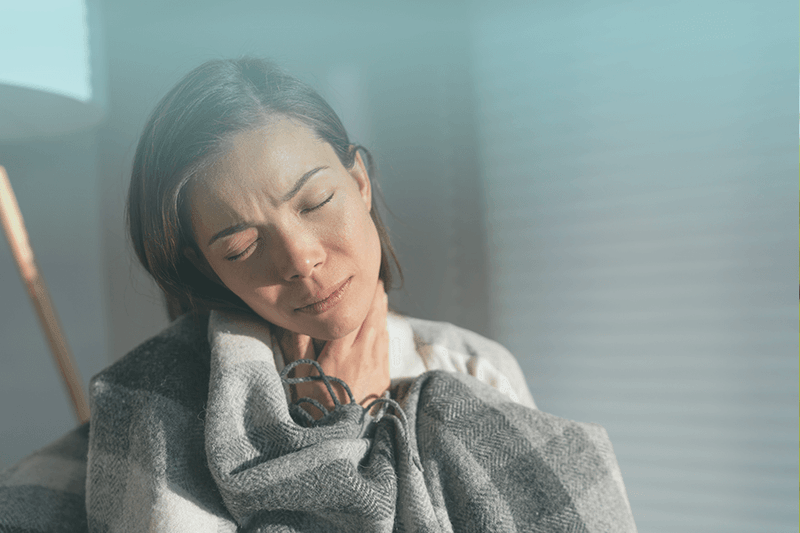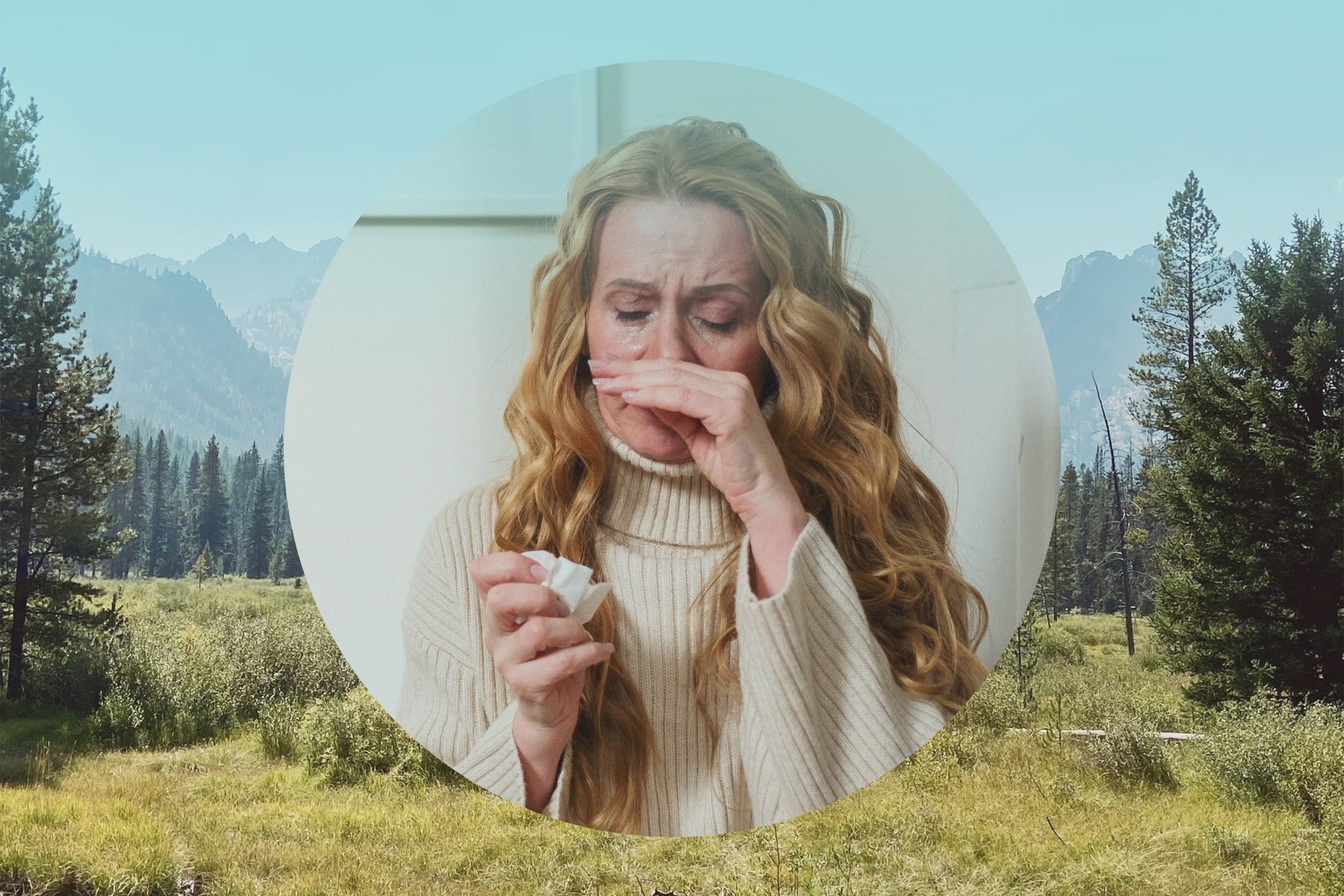Breathe Freely

How To Best Manage Pollen Allergies in Austin
The state capital of Texas and the self-proclaimed live music capital of the world, the city of Austin is a place teeming with activity and culture. But with all that Central Texas fun can come a full serving of seasonal pollen allergens. Here’s everything you need to know.
An Overview of Pollen Allergies in Austin
Flush with stunning greens and interspersed with shimmering waterways, Austin, TX, is a paradise for those seeking a city vibe nestled in a natural setting. Aside from its picnic areas, parks, and scenic sanctuaries, Austin is also a hub for admirers of the eclectic. Interesting gastropubs, historic museums, and iconic multipurpose venues spot the city no matter where you go.
And then there’s the allergies…

Which Allergens Are Bad in Austin, TX?
Although every person is different, allergies in Austin can be both season-to-season and year-round, depending on your sensitivities. A big autumn city for football, hiking, and other outdoor recreation, some people find Austin’s pollen allergies to be worse in the fall. Others are less bothered by October weeds, and more susceptible to tree pollen from December through February when mountain cedar trees trigger “cedar fever.”
Again, it all depends. Some seasons may bring you scratchy throats, watery eyes, and heavy congestion, whereas other months are symptom-free.
Fortunately, there are many ways you can potentially prevent and treat pollen allergies in Austin. From common, over-the-counter meds to grandma’s remedies, lifestyle hacks, and even innovative immunotherapy, you have options.
Just remember, no one size fits all. As always, consult your healthcare provider for a personalized treatment plan that works for you.
Comparing Pollen Allergies in Austin to Other Cities
The country’s top charity for all things allergies and asthma, The Asthma and Allergy Foundation of America (AAFA) has conducted extensive research on the worst cities in the nation for pollen allergies. According to the foundation’s 2023 Allergy Capital Report, Austin ranked 97th among the top 100 cities in the country with an overall rating of “Better Than Average.” A closer look at this reveals some interesting aspects of Austin’s seasonal pollen allergies.
The overall designation is based on three categories: (1) the severity of grass, weed, and tree pollen, (2) the availability of credentialed allergists, and (3) the use of over-the-counter medicines. The AAFA finds Austin, TX, to be “Average” in pollen, “Better Than Average” in access to specialists, and “Better Than Average” in medication use.
Concerning seasonal pollen allergies in Austin, the city ranks 99th for tree pollen, 71st for grass pollen, and 99th for weed pollen.
How Austin’s Pollen Allergies Rank Among Other Texas Cities
Although Central Texas has long been referred to as ‘the allergy capital of the world,’ this reputation may not be entirely accurate. Again, it all varies based on your unique immune system vulnerabilities, as well as weather patterns and climate factors that affect your exposure risks.
With that said, it’s interesting to note how Austin ranks compared to other major cities in Texas. Whether you’re simply curious, considering moving, or don’t even live in Texas but plan on visiting more allergy-friendly locations, a worse-to-best list can help.
Here are the top cities in Texas for pollen allergies, according to the AAFA, in descending order from worst to best.
- Dallas - Ranked #2 overall only to Wichita, Kansas, the facetiously named “Big D” is generally considered a bad place for seasonal pollen sufferers. More than that, Dallas recorded the highest sum of “very high” and “high” pollen counts in 2022 of all cities.
- Houston - Coming in at #12 on the AAFA’s list, Houston scores “Average” in medication use and access to specialists, and “Worse Than Average” in overall pollen counts. With multiple waterways in its metro area, you can typically count on some allergen to be in the air.
- McAllen - At 25th on the list, McAllen, Texas, is worst for its grass pollen allergies, with a ranking of #11. It ranks 29th for tree allergies, and is substantially better for weed allergy sufferers, cementing its place at #80 on that list.
- San Antonio - The Alamo City has a ranking of #37 on the list and is most problematic for grass pollen sufferers. So, if you love to mow your lawn and do yard work during the dog days of summer, just be careful you don’t overdo it!
- El Paso - Close behind San Antonio in the 39th position is the Spanish-styled Sun City. Worst for its weed pollen allergies, seasonal allergy sufferers may have to monitor their symptoms most during the fall months.
So there you have it. At the very bottom of the list are the pollen allergies in Austin, where the AAFA finds encouragingly better conditions than other cities. Unfortunately, this may mean very little for certain individuals. Immunological differences, shifting weather patterns, industrial pollution, and worsening seasonal trends can all complicate allergy symptoms.
If you’re suffering from allergic reactions, or aren’t sure what your issues are, speak to a medical professional. For recurring and severe symptoms, always consult a personalized healthcare provider first.
The Role of “Cedar Fever” in Austin’s Pollen Allergies
Now that you have a better idea of where Austin’s seasonal pollen allergies stand, let’s explore a phenomenon many Texans know too well. Whether you’re a seasoned veteran or completely new to the area, “cedar fever” is likely to impact you one way or another. Even if you don’t get it yourself, you may hear others complaining of symptoms, or, at the very least, mentioning the inconvenience in passing.
What is “Cedar Fever”?
Most concentrated in Central Texas to the west of I-35, “cedar fever” is a collection of symptoms attributed to so-called mountain cedar trees. Before we dive deeper, however, it’s important to note some common misconceptions. Firstly, “cedar fever” actually rarely triggers a fever, and when it does, that fever almost never exceeds 101.5 °F. Secondly, cedar fever is generally not caused by true cedar trees. Rather, the “mountain cedar trees” are actually Ashe Junipers.
At its peak from December through February, the cedar fever season is triggered by massive releases of tree pollen. Because these male Junipers love to release their goodies following a cold front, the conditions are perfect for marvelous spectacles. In fact, the simultaneous release of pollen grains often mirrors a fire, with yellow clouds of smoke pouring from the canopies.
With the right pressure, dry air, and wind patterns, these pollen plumes can travel hundreds of miles, affecting people all over Texas. If you’re worried about pollen allergies in Austin, keep a close eye on these winter months. While most people don’t commonly associate winter with seasonal pollen allergies, the mountain cedars have something to say!
Symptoms of Cedar Pollen Allergies in Austin
Because cedar fever season is something of an allergenic phenomenon, it may trigger symptoms in people who are otherwise unbothered by seasonal allergies. After all, we’re talking about a massive and simultaneous release of tree pollen. There’s a reason those trees look like they’re smoking!
If you think you’re experiencing cedar fever in Austin, Texas, track your symptoms. Because cedar pollen counts overlap with flu season, it can be difficult to know what’s causing what.
First, let’s cover the common symptoms cedar fever induces:
Still not sure if you’re experiencing cedar fever or symptoms due to a cold, flu, or COVID-19? While you should always consult a medical expert for a diagnosis and treatment protocol, it’s a good idea to know what Austin’s cedar pollen does not typically cause.
Here are symptoms usually not found with cedar fever from Austin’s allergens.
- Body and Muscle Aches
- Loss of Taste or Smell
- Shortness of Breath
- Nausea/Vomiting
- Diarrhea
- Fever or Chills
Again, in some cases, you may experience a fever from cedar pollen in Austin. However, it is uncommon and high fever temperatures are almost never caused by cedar allergens. Aside from cedar fever symptoms, you should also keep an eye out for grass and weed allergies, which can begin in the spring and run through the fall.
Uncertain which pollen allergies in Austin are the ones inducing your symptoms?
You’re far from alone. Various types of plant species propagate that pesky pollen we all love so much! If you’re concerned about pinpointing the exact allergens causing your symptoms, you have various options. First, however, you should have a basic understanding of common allergens throughout Austin, TX.
Sources of Pollen Allergies in Austin: A Rundown
The USDA Plants Database provides extensive information about specific species of plants, including allergenic weeds, grasses, and trees. Some of these species are also cross-reactive, meaning they share similar proteins that can trigger symptoms upon exposure. In other words, your immune system may detect a similar protein in something you aren’t technically allergic to, but because that protein is similar to the protein in something you are allergic to, you may experience allergies.
Tree Pollen Allergies in Austin, TX
Unfortunately, the period after cedar fever season may offer little respite. From early spring through the summer, trees like elm, oak, pecan, and cottonwood all release pollen.
One of the top tree pollen allergies in Austin is due to oak. The yellow powder can be found across cars, sidewalks, windows, and everywhere else. With drier, windier conditions, this pollen can really circulate, making preventative measures crucial.
As always, check your local weather forecast for pollen counts. Practice consistent common sense practices like showering and changing clothes regularly, and keeping your home and vehicle clean.
Allergenic Grasses in Austin
According to the Asthma and Allergy Foundation of America (AAFA), Austin’s worst pollen ranking is for grass pollen. Be especially wary of cross-reactive species like Bahia and Johnson, Bermuda and Salt, and Kentucky Blue and Timothy. Many other potentially problematic grass allergens exist as well, including Orchard, Redtop, Meadow Fescue, and Smooth Brome.
There are numerous grass species around Central Texas, so if you don’t have a clue which ones are causing your symptoms, simply consult a credentialed allergist or immunologist. You can even use free at-home allergy tests to determine the precise allergen(s) affecting you.
Weed Pollen Allergies in Austin
We’ve all heard of ragweed, a common weed species notoriously resilient and versatile. Sometimes reaching heights taller than a person, ragweed is a strong producer of seasonal pollen.
Weed pollen allergies in Austin also stem from species such as Spiny Pigweed, Palmer’s Amaranth, Marsh Elder, Baccharis, Firebush, Nettle, and Lamb’s Quarter. As always, be mindful of species that may cross-react or other lesser-known varieties that may trigger your symptoms. An allergy specialist can help you diagnose and treat your specific sensitivities.
With weed pollen season peaking in mid-fall, you can typically expect a downturn as November fades.
The Reason You Have Pollen Sensitivities in Austin
Although local weather patterns, global climate trends, and various exposure risks all impact your allergic reactions, one factor may supersede all of these: your immune system.
In short, your immune system is a complex network of organs and mechanisms that fight off foreign invaders. These invaders could be everything from a toxin or drug to dander from your dog. As you might imagine, a healthy immune system plays a major role in resisting diseases, illnesses, and yes, allergies.
The Power of Your Immune System
If you struggle with allergies in Austin, Texas, your immune system is undoubtedly a primary cause. Whether it’s seasonal pollen allergies due to cedars or allergic reactions from year-round dust mites and mold, your specific reactions are specific to, well, you.
As research indicates, allergies are typically brought on by an overreaction of your immune system. That is to say, most allergens do not pose serious risks (as would, say, a poison), but because your system is overreacting, you experience symptoms.
The exact cause of your symptoms is complicated.
Many chemical processes occur in your body when you have an allergic reaction. Generally, your immune system responds to allergens, or antigens, by producing defensive proteins called antibodies. Your body also produces chemicals such as histamines, which are responsible for some of your symptoms.
Overall, your immune system fortifies its defenses and attempts to eradicate the foreign invader. While some medications and remedies may treat your symptoms, these effects are typically short-lived. Alternative options, such as sublingual immunotherapy, can actually target the precise antigen(s) causing your allergies.
Ready to Tackle Your Austin Pollen Allergies?
At Quello, our antigen-tailored allergy drops are delivered daily, right under your tongue. The process is easy and painless. No doctor visits or headache-inducing medical snafus. To begin, all you need to do is take a simple at-home, totally free allergy test.
Once you’ve mailed in your blood sample, our specialists can begin formulating the allergy drops right for your antigen sensitivities. It’s truly that simple.
Note: While allergy drops have demonstrated some efficacy, they are not right for everyone. Consult your healthcare provider for personalized solutions and treatments.

FAQ
When Is Allergy Season in Austin?
Any ‘allergy season’ will vary based on personal vulnerabilities, seasonal trends, and other ecological variables. That said, the first two months of winter and May are typically worse for tree allergies, while summer and fall are the peaks for grass and weed allergies. You also have to remember that perennial allergies like mold, dust mites, cockroaches, and dander can cause issues at any time. Again, conditions can change across seasons, so speak with a specialist before assuming anything.
Do Allergy Drops Treat Pollen Allergies in Austin?
Allergy drops may be one option in a comprehensive treatment protocol. Although some research studies indicate that sublingual immunotherapy is effective, this is not true for everyone. Some people experience complete symptom relief after years of allergy drops, whereas others are completely unaffected by allergy drops.
Do Allergy Drops Have Side Effects?
All medications have side effects. Although allergy drops do not exhibit significant side effects for most users, conditions change. Compared to allergy shots, allergy drops typically show fewer and less severe side effects. Again, this may vary widely among users, so be sure to speak with medical professionals first.
Have any questions or concerns? Consult with one of our allergy specialists today!
Overcome your allergies at home with our doctor-led therapy.
Get started with our free allergy test kitGet Started with no test needed.
Overcome your allergies at home with our doctor-led therapy.
Get started with our free allergy test kitGet Started with no test needed.




